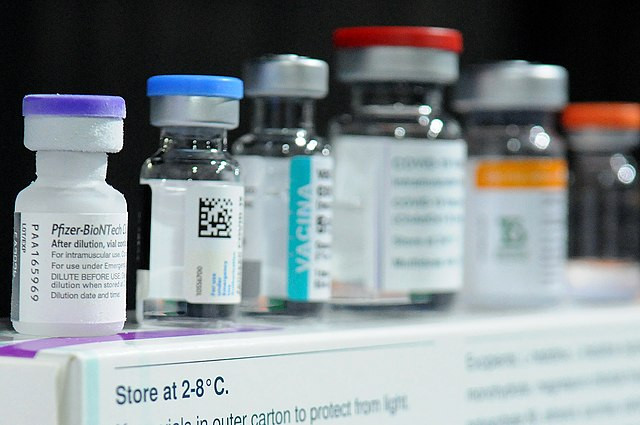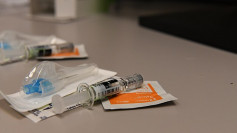The U.S. Food and Drug Administration (FDA) has officially approved the latest COVID-19 vaccines from Pfizer and Moderna, marking the third update to the vaccines since their initial rollout. The newly approved vaccines are designed to combat the evolving strains of the virus, particularly the KP.2 variant, a descendant of the highly contagious JN.1 strain that dominated last winter. As the U.S. continues to grapple with a summer wave of COVID infections, the availability of these updated vaccines is timely, and they are expected to hit pharmacy shelves within days.
This new approval is significant as the country faces rising COVID cases, with the Centers for Disease Control and Prevention (CDC) reporting increasing emergency room visits and hospitalizations due to the virus since mid-May. As the fall and winter seasons approach, health officials are urging the public to consider getting vaccinated to bolster immunity against the virus, which has shown a pattern of seasonal surges.
How the New Vaccines Differ
The newly updated vaccines from Pfizer and Moderna have been specifically formulated to target the KP.2 variant. This strain, while no longer the most prevalent, shares similarities with other circulating variants such as KP.3.1.1, which currently accounts for 36% of new COVID cases in the U.S. Despite these changes, experts expect the vaccines to provide strong protection against severe illness caused by these newer strains.
A spokesperson from Pfizer indicated that the new vaccine generates a "substantially improved" immune response against multiple currently circulating variants, including KP.3, when compared to previous versions. John Moore, a professor of microbiology and immunology at Weill Cornell Medical College, highlighted that the differences between the variants are minor, suggesting that the overall efficacy of the vaccine should remain robust against the current strains.
Who Should Get the New Vaccine?
The CDC recommends that all Americans aged six months and older receive the updated COVID vaccine. However, the urgency and necessity of the vaccine may vary depending on individual risk factors. Dr. Ashish Jha, dean of the Brown University School of Public Health, has suggested that COVID-19 is likely endemic in the U.S., following a relatively predictable pattern similar to the flu. As such, annual vaccination may become a routine part of public health strategy.
For individuals at higher risk of severe COVID outcomes-such as those over 65, those with weakened immune systems, or those with underlying health conditions like heart disease or obesity-the vaccine is particularly important. Dr. Isaac Bogoch, an infectious disease specialist at the University of Toronto, emphasized that the primary role of the vaccine is to protect these vulnerable populations from severe outcomes like hospitalization and death.
Timing Your Vaccination
With the vaccines being available earlier this year compared to last, many are wondering when the best time is to get vaccinated. The CDC advises that individuals who have recently recovered from COVID consider delaying their vaccine dose by three months. This recommendation is based on the idea that recent infection provides a temporary boost in immunity, which could diminish the immediate benefit of vaccination.
For those at high risk, it may be advisable to get the vaccine as soon as it becomes available, especially if they have not been recently infected. On the other hand, for younger and healthier individuals who have recently recovered from COVID, waiting a few months before getting the vaccine could be beneficial, as their existing antibodies might interfere with the vaccine's ability to stimulate new immune cells.
Dr. Paul Sax, clinical director of the division of infectious diseases at Brigham and Women's Hospital in Boston, suggested that for most people, October might be an ideal time to get vaccinated, aligning with the typical flu shot schedule and providing protection during the anticipated winter surge.
What to Expect After Vaccination
As with previous COVID vaccines, the most common side effects include pain at the injection site, tiredness, headache, muscle pain, chills, fever, and nausea. These side effects typically resolve within a few days. Serious side effects, such as myocarditis (inflammation of the heart muscle), have been observed but remain rare, particularly among young men.
Cost and Accessibility
Pfizer, Moderna, and Novavax have set the price of the updated COVID vaccines at up to $150 per dose. Most people with public or private health insurance should be able to get the vaccine at no cost, provided they go through an in-network provider. However, those with grandfathered health plans or short-term coverage may face out-of-pocket costs.
For uninsured individuals, options may be more limited. The CDC's Bridge Access Program, which has been providing free vaccines for uninsured adults, is set to end in August due to funding shortages. After this, free vaccines may only be available through community health centers or other safety net providers.






